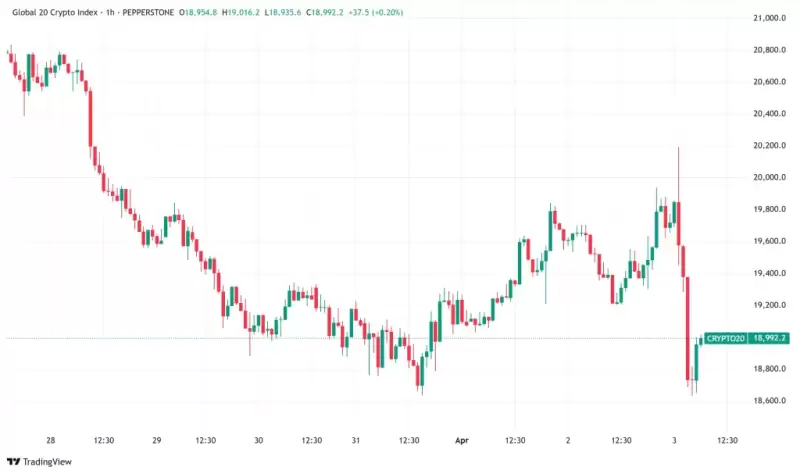 |
|
 |
|
 |
|
 |
|
 |
|
 |
|
 |
|
 |
|
 |
|
 |
|
 |
|
 |
|
 |
|
 |
|
 |
|
The shift to proof-of-stake has raised worries about over-centralization. By reaffirming its commitment to decentralization, the blockchain can realize its goals

The United States Securities and Exchange Commission dropped charges against the Ethereum blockchain in June 2023, a pivotal moment in the platform’s journey toward greater maturity and acceptance in the financial world.
For those who didn’t follow the case, the SEC believed ether (ETH) was sold as an unregistered stock, with concerns that it was being sold without following certain rules and protocols. However, Ethereum’s proponents argued that, since the network is decentralized, it does not meet the criteria of an investment contract or security.
While the SEC may have decided against direct legal action, it did open the door for further discussions around centralization. Some technological aspects of Ethereum’s architecture have stimulated an important dialogue around contracting power among influential entities. While these discourses are mainly internal, addressing these concerns can enhance the network’s upgrade goals and support true decentralization.
This is especially true as the network tries to embody the ideals of “Ethereum 2.0,” the stronger, more accessible, and more practical version of its token and infrastructure. Some say it’s already here, while others point out gaps that still need to be filled to definitively claim its arrival.
Yes, Ethereum 2.0 holds significant potential for transforming DeFi and the broader ecosystem, but we can’t just have a foot halfway through the door. To reach its full potential, key developments still have to be reached.
Validator centralization
By transitioning to a proof-of-stake (PoS) mechanism in September 2022, Ethereum now allows validators to stake ETH, with large stakes increasing validation chances and rewards. This upgrade clearly underscores Ethereum’s key role in DeFi by sparking countless innovative financial tools being created on the network for lending and trading, among other use cases.
However, emphasizing token ownership over the number of validators could potentially concentrate power among smaller groups, going against crypto’s ethos of decentralization. Moreover, staking requires an input of 32 ETH, meaning that validators with significant ETH staked can wield disproportionate influence over network governance and decision-making processes. This creates a feedback loop that favors certain participants, and can lead to power and wealth accumulating in the hands of a few individuals.
In March, Vitalik Buterin even expressed his concerns about “lazy stakers,” or those who engage solely in staking pools rather than solo staking — clearly indicating the relevance of the centralization issue.
At its core, Ethereum represents a shift in the way financial services are designed, accessed, and utilized. However, relying on a few entities continues to introduce risks and questions about how decentralized Ethereum 2.0 really is.
Shifting gears to DeFi
Ethereum’s path towards centralization sets the stage for more severe complications down the line — namely with regulators and reduced network resilience. Ultimately, Ethereum’s future within DeFi and the blockchain ecosystem as a whole hinges on balancing technical advancements while limiting centralization wherever possible. And there are ways to make it achievable.
If implemented correctly, concepts like rainbow staking could further enhance Ethereum’s adaptability while also combatting centralization. In essence, rainbow staking allows users to stake ETH across multiple pools and strategies simultaneously, effectively creating a “rainbow of rewards”, so to speak, that stakers receive while mitigating anti-competitive risks and building a more resilient ecosystem. The ETH validation process is separated into “heavy” and “light” staking — with “heavy” focusing on validation services for finalization and “‘light” staking zeroing in on censorship resistance of transactions.
For example, liquid staking protocols like Lido or Rocket could offer heavy service staking, while existing stakers can opt to run light service operators. Rainbow staking will eventually result in a more efficient and competitive network while granting more liquid staking provider diversity. However, executing it won’t be easy and could add confusion to the overall staking structure.
Beyond rainbow staking, Ethereum could leverage network-wide advancements already introduced in its initial 2.0 updates, like sharding. While sharding has been scrutinized for its security issues, justifying the shift to Layer 2 and zero-knowledge developments, that doesn’t mean the technology should be outright abandoned.
We have seen evolutions here thanks to developments like “danksharding” specifically for Layer 2s. Danksharding involves proposer-builder separation (PBS), a deviation from how Ethereum validators function now — proposing and broadcasting blocks entirely on their own. Instead, PBS shares the love and splits up these tasks among multiple validators.
Ultimately, danksharding helps implement data availability, allowing validators to verify blob data quickly and efficiently, while simultaneously identifying missing data.
The aim here is to make transactions on Layer 2 as cheap as possible for users and scale Ethereum to validate over 100,000 transactions per second. This would allow dApps such as Uniswap to process transactions at a significantly lower cost with quicker transaction approval times.
However, danksharding’s highly technical infrastructure and implementation leave out smaller rollups and potentially encourage centralization. So, while
Disclaimer:info@kdj.com
The information provided is not trading advice. kdj.com does not assume any responsibility for any investments made based on the information provided in this article. Cryptocurrencies are highly volatile and it is highly recommended that you invest with caution after thorough research!
If you believe that the content used on this website infringes your copyright, please contact us immediately (info@kdj.com) and we will delete it promptly.
-

-

-

-

-

-

-

-

- Daily Crypto Signals: Bitcoin Tumbles from $88.5K, XRP Awaits Ripple Effects of New Trump Tariffs
- Apr 03, 2025 at 10:30 am
- The cryptocurrency market displayed a mixed landscape on April 2nd, 2025, as Bitcoin, Ethereum, XRP, and other altcoins grappled with the ripple effects of newly announced US tariffs
-




























































